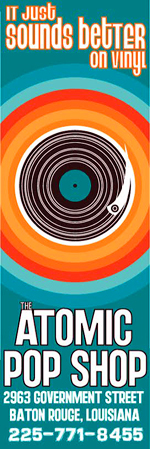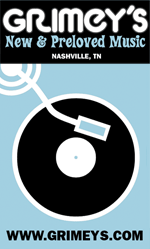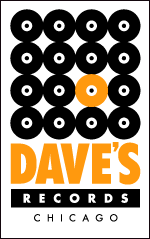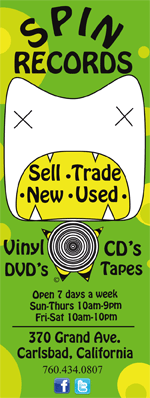
In terms of elevated 2oth century pop songwriting, Laura Nyro has remained part of the discourse for decades, with her highest profile recordings likely her second and third LPs, both cut for Columbia in 1968-’69. But hey, don’t get the idea that her ’67 debut for Verve, More Than a New Discovery, is merely formative or somehow negligible. To the contrary, many know it under its reissue title of The First Songs, which featured a reshuffled track order and a mix with increased reverb. However, the Real Gone Records-Second Disc reissue, the first time the Verve edition has been repressed on wax, sets the track order right and offers Nyro’s preferred (and rare) original mono mix. It’s out January 10.
The latter portion of the 1960s is loaded with singer-songwriters whose work is best known through the interpretations of others. Many of these cult figures are folky in comportment, but even as Nyro recorded her debut for Verve’s Folkways imprint (later renamed Verve Forecast) and made a crucial early song sale to Peter, Paul and Mary (“And When I Die,” later butchered by Blood, Sweat & Tears), she was a pop stylist of pronounced sophistication.
She was appealingly introspective as well, a quality putting her in the same neighborhood as Carole King, with sales figures excepted, as Nyro’s own albums never made a big impact commercially, although they did shift enough units that she never fell victim to record company disinterest. In this regard, she was similar to Randy Newman, and if he’s better known today that’s partly because he’s still alive and kicking (Nyro passed far too soon of ovarian cancer in 1997). Additionally, he benefits from a lucrative late-career pursuit in film scoring.
But the bigger difference between Newman and Nyro is the lack of the satirical and ironic in her work, though the songs of his that evince a palpable degree of sincerity provide a strong point of unification, as the two songwriters share a Tin Pan Alley foundation (and a piano-based approach) that is ultimately manifested in distinct sensibilities. That is, Nyro is as much of an auteur as Newman; once heard, she’s impossible to confuse with anybody else.
The auteur designation derives from the world of cinema, a manner of classifying films by a filmmaker (most often the director) that provides an artistic focal point that can be recognized across a succession of movies. To apply it to pop music, it signifies talent that’s coherently personal (if sometimes shrewdly adaptive) across commercial trends which are frequently fickle. That’s Nyro in a nutshell; decidedly not a hack, and as the original title of her first album illustrates, she was introduced to the scene as an artist already coming into bloom.
But as mentioned above, akin to the original cinematic auteurs of Hollywood’s Classical Era, Nyro wasn’t immune to having her creativity tampered with; Verve began this process by switching up More than a New Discovery’s track sequence (and stripping the original title from the cover), while Columbia, after purchasing her catalog, extended the meddling by issuing The First Songs with a new sleeve design (and Verve’s revamped title on the cover) plus the new, inferior mix referenced above.
While not as egregious as other examples of record company destructiveness, the alterations were still uncalled for, and it’s a swell turn of events that her debut is getting the respectful reissue treatment it deserves. Because you see, “Goodbye Joe” delivered More than a New Discovery a truly splendid opener, diving deep into the post-Bacharach erudite pop of the period but with depth that accrued gradually and subtly as the instrumentation and arrangement (by Herb Bernstein) hit the cosmopolitan norms of the era without going overboard.
Restraint is a key to Nyro’s success, at this point and later in her career. Even when she’s singing slow and soulfully in “Billy’s Blues,” she’s not desperate to impress. And restraint can be credited as one reason for the worthiness of Nyro’s “And When I Die.” To extend an analogy to Hollywood in the era of this album’s release, the Blood, Sweat & Tears cover is a corny western-musical (think “Paint Your Wagon”), while her version resonates intelligence and flair, perhaps like an underrated early effort directed and choreographed by Bob Fosse (that would be “Sweet Charity”).
Those films, issued in 1969 and overlapping with the dawn of the New Hollywood, create a solid point of comparison with how Nyro differed a bit stylistically from the post-Beatles-Dylan-Stones rock scene. Maybe not as much as Newman, but still, the point is solid. However, it’s worth qualifying that she wasn’t out of step with the times, as she played the Monterey Pop Festival in ’67.
To further back up this statement, those who had hits with Nyro’s material weren’t exactly sharpening the cutting edge of their timeframe. Take Barbra Streisand for instance, who had a hit with this album’s “Stoney End” in 1971. Her take is pretty good, but I have a soft spot for Peggy Lipton’s version from ’68 (The Stone Poneys gave it a not-bad reading, as well).
The best one is Nyro’s though, and it sounds terrific in this initial mix. This production factor extends to the album overall, especially “Lazy Susan,” where the arguably superfluous additive of Buddy Lucas’ harmonica gets more satisfactorily integrated into the whole. It’s followed by “Hands Off the Man” (later retitled “Flim Flam Man”) which strikes a fine balance between the Tin Pan Alley and the Brill Building.
“Wedding Bell Blues” was moved to the opening spot on side one for The First Songs, but here it begins the flip in excellent fashion. It was also issued as a single, and that it wasn’t a hit is frankly inexplicable (it apparently peaked at #103), as it became a #1 smash two years later for The 5th Dimension. Yes, their version is livelier, but I’ll argue that Nyro’s is more soulful, which points to her ability to engage with soul, R&B, and doo-wop forms (see Gonna Take a Miracle with LaBelle) without coming off like a cringe-inducing charlatan.
To further illustrate, “Buy and Sell” even gets a little jazzy, with some nice guitar from Jay Berliner. I emphasize a little jazzy, as restraint is again crucial to the LP’s scheme. But it’s important to not confuse restraint with timidity, as Nyro is boldly throated across the album and during “He’s a Runner” in particular. “Blowin’ Away” (also a hit for The 5th Dimension) shows off a little range, as she lands in a zone that’s not too far from what Nancy Sinatra was doing contemporaneously. And that’s alright.
“I Never Meant to Hurt You” might flirt a little with the encroaching Middle of the Road, but it’s saved by strength of voice plus jazzy acoustic bass and non-syrupy strings. The First Songs moved “And When I Die” to the closing spot in a rather predictable bookend with “Wedding Bell Blues,” but here it all ends with “California Shoeshine Boys,” an upbeat tune with a driving rhythm that suggests Nyro might’ve been hanging around with John Sebastian.
It’s a tune that’s rarely spoken of, but it ends More than a New Discovery with panache and expands the range of a record that was already broad of scope. That’s it’s freshly available is terrific. In an edition of 1250 copies, it won’t be around long.
GRADED ON A CURVE:
A-












































